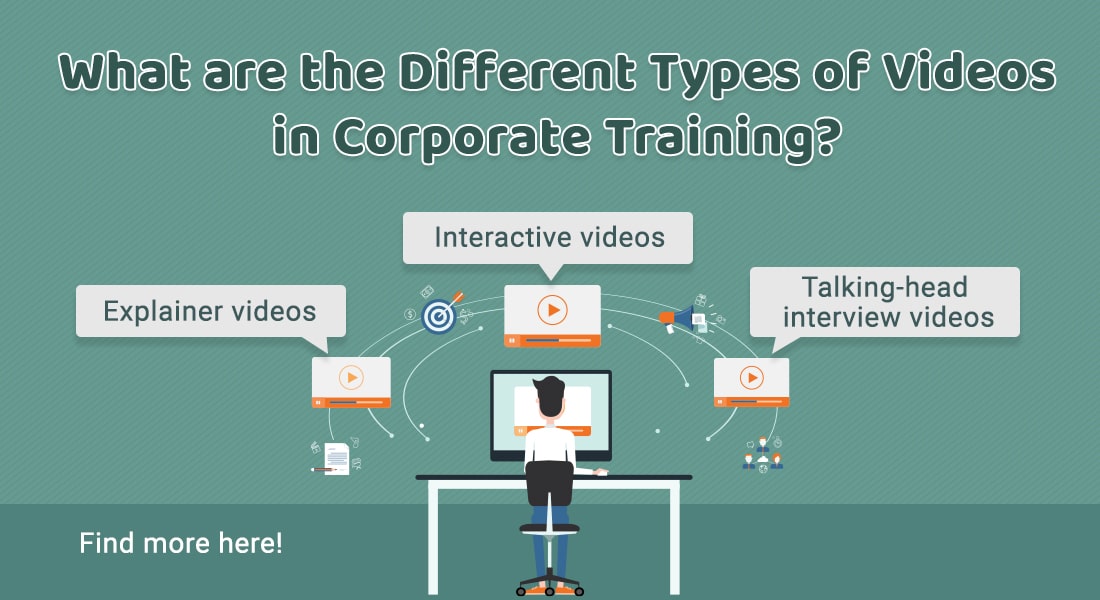Ramping Up Mobile Learning with Videos and Gamification
Check this blog to know how you can ride on the popularity of mobile learning by using videos and gamification for maximum effect.

Mobile learning has become an integral part of online learning. Learners expect learning to be available on their mobile devices. What are the reasons for the burgeoning popularity of mobile learning in the online ecosphere? What makes the idea of learning on mobile devices so popular?
The employee profile in organizations today includes people from multiple generations – Baby Boomers, Generation X, and millennials – they all share a preference for mobile learning.
There has been a shift in learning patterns with learners choosing multimedia to stay engaged in the learning environment. The growth in technology has also contributed to this. The ubiquitous Smartphone allows learners to access videos, microlearning, podcasts and games on the go. These devices also give them more control over the learning process.
Initiatives such as BYOD (bring your own device) have encouraged a mobile-based learning environment. Growth in technology and tools have also contributed to the trend. The development and use of mobile apps has become widespread, contributing to the growth of mobile learning. These encouraging trends have inspired organizations to convert their legacy courses to be compatible with mobile learning.
These reasons are making organizations focus on ways to use mobile learning effectively in their learning initiatives. They have realized that mobile is also about learning at the moment and making use of dead-time (commuting, waiting, flying, etc.) to urge employees to engage in a learning activity. The catch is the learning moments are brief; content has to be designed keeping this in mind.
Ideally, mobile-based learning should cater to short bursts of casual learning. The cardinal rule is to keep learning small and simple. To meet these demands, among the various strategies, learning developers use videos and gamification for mobile-based learning solutions.
Videos
There is no doubt that the consumption of videos has been on the rise, especially on mobile devices. The increasing penetration of Smartphones has been the biggest driver for mobile video consumption. In fact, the Cisco Visual Networking Index predicts that by 2020, 75% of Internet traffic will be through videos.
Videos have become a popular medium for e-learning in recent years. Videos are adaptable to many devices and given the extensive use of mobile devices and better connectivity, they are an ideal medium to deliver mobile-based learning.
Videos can be used in many formats for mobile learning. Explainer videos can be used to summarize what was taught in formal training and reinforce learning after the formal training. Animated videos in the form of whiteboard animations can support formal training either before or after the training, to stress the key concepts in the course. Real-life videos are ideal to explain processes and procedures.
Best practices of using videos in mLearning
- Content should be standalone and ideally not more than five minutes long.
- Videos should highlight key learning areas.
- Content should be small learning nuggets.
- Videos explaining processes must be shot at real-life locations so learners can relate to them.
- Avoid heavy-sized videos that are difficult to download.
Gamification
A considerable section of Smartphone owners use these devices for playing games and this is one major cause for addiction to these mobile devices. While addiction per se is bad, the same can be put to good use if mobile learning is gamified. Mobile learning and gamification can be the winning formula to attract learners and motivate them.
Gamification can work when employees have to be trained on the automation of daily business tasks. Gamified learning modules can present a challenge to employees and they can be rewarded on the successful completion of a task. Gamification brings the social element to mobile learning. Elements such as multiplayers, chat, and leaderboards facilitate social interaction and keep learners engaged.
Best practices of using gamification in mLearning
- Gamification should promote an accelerated and self-directed learning approach.
- Design with a self-directed approach to ensure that learners are able to navigate the digital environment on their own and are able to learn based on the decisions they make.
- Include instruction slides to help learners understand what they need to do and how they will play the game.
- Use feedback in the form of scoring systems, leaderboards, or notifications; create an element of competition among learners and let managers evaluate the progress of learners.
- Choose game components that are suitable to both your topic and the learners.
Videos and gamification have the potential to bring effective results from your mobile-based learning. Designing them with the best practices discussed in this post will ensure a better learning experience. Let us know how you have used these elements in your mobile-based learning initiative.





